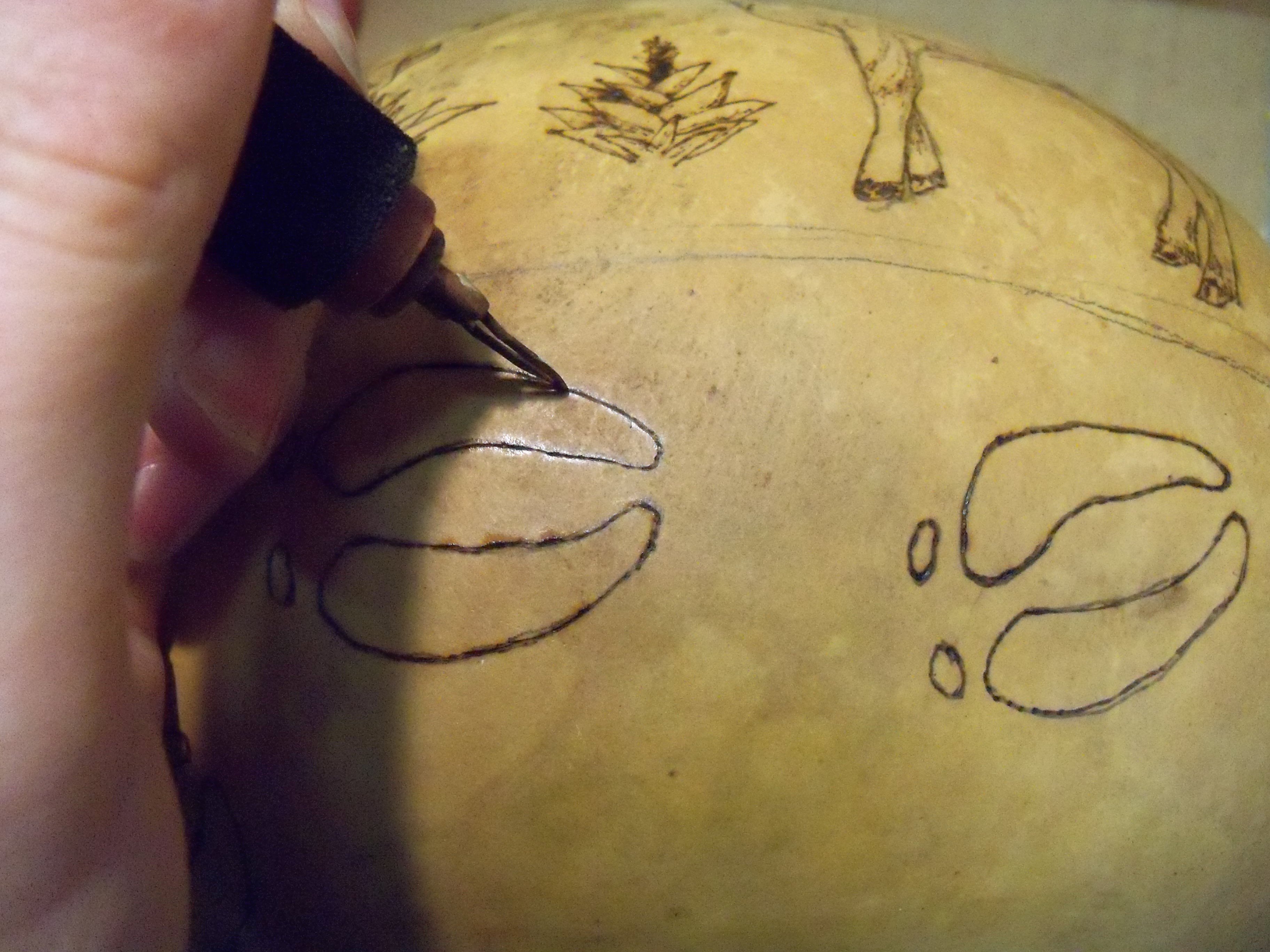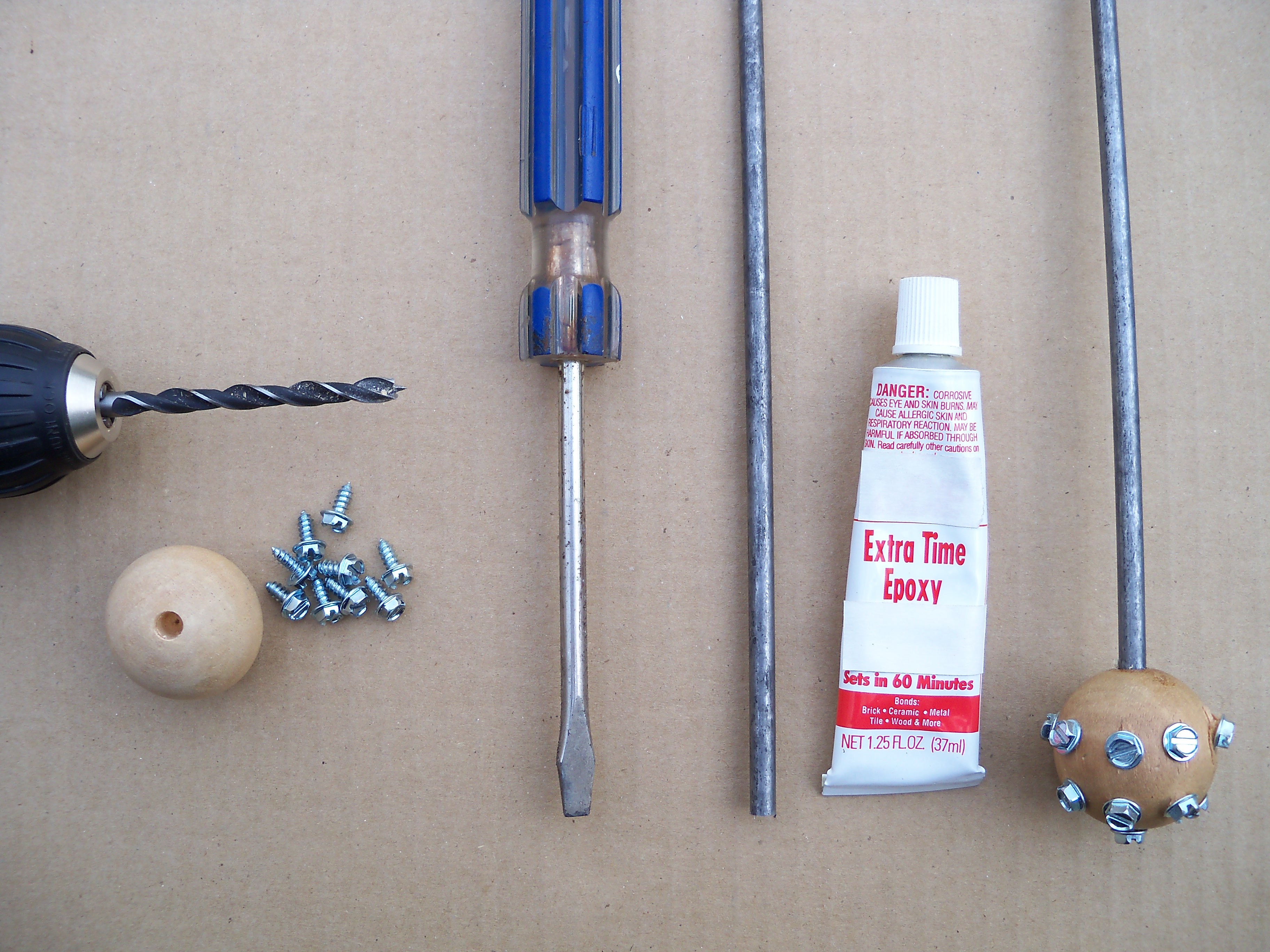I use the Everglades Patriot 1000 Wood Burning System for most of my woodburning although I still sometimes go back to the hobby woodburner with interchangeable tips. My hobby woodburner is the Walnut Hollow brand and has been a very reliable one for me compared to the others I’ve used. I’d check that one out first if you’re new to woodburning.
The fixed tip pen I am using in the first photo is the “Writing Tip.” At just the right temp I can use this pen like a real pen. If using a variable temperature woodburner first experiment on a scrap piece of gourd to find the right temp for the job at hand.
For light shading I scrape the gourd back and forth pretty quickly with the tip to leave slight marks in the gourd. This is called directional shading. Remember to follow the contours of the object you are woodburning when doing directional shading.
Other methods of shading I like to use are dots (the closer the dots the darker the shading) and gradient shading, which I do with the flat side of a tip, darkening the gourd in varying degrees without leaving a pattern.
To cut deep grooves in the gourd like I did for the hoof prints in the second photo I used the knife tip.






















